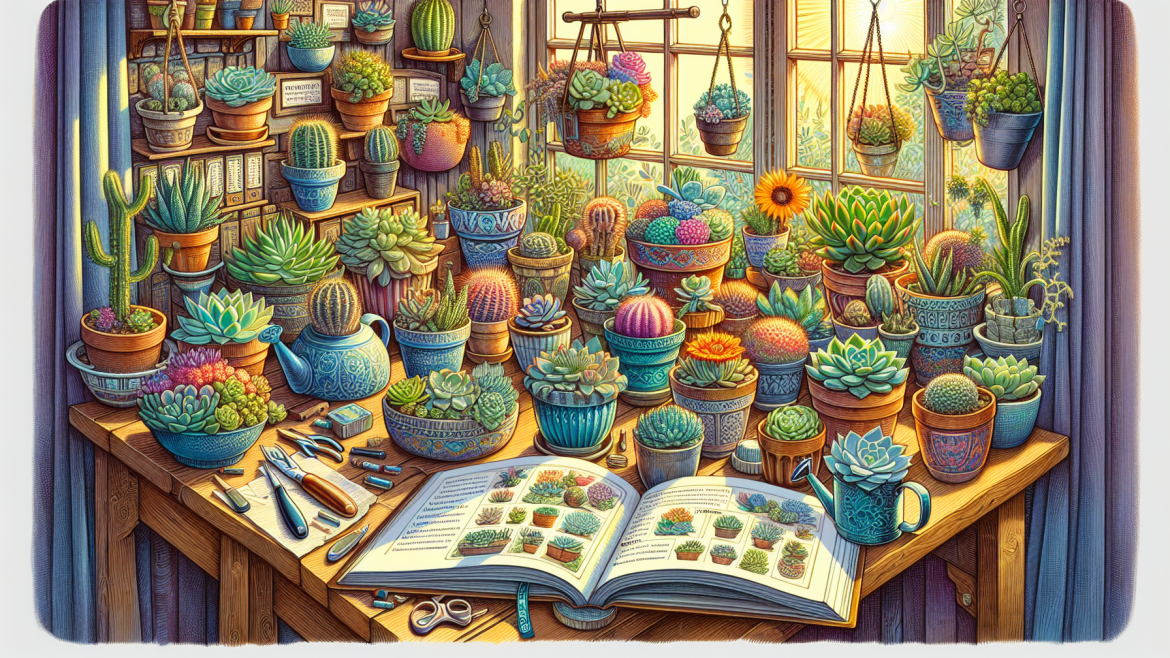Succulents have captured the hearts of gardeners and interior designers alike, owing to their unique aesthetics, resilience, and low maintenance requirements. Whether you’re a seasoned succulent enthusiast or a newcomer to the world of these delightful plants, this comprehensive guide will equip you with the knowledge to successfully grow and care for succulents.
Understanding Succulents
Succulents are a diverse group of plants known for their ability to store water in their leaves, stems, or roots, allowing them to survive in arid conditions. This water-storing capability contributes to their fleshy appearance. Common examples include Aloe, Echeveria, Sedum, and Crassula species.
Choosing the Right Succulents
When selecting succulents, consider factors such as light availability, climate, and the specific growth habits of the plants. Some succulents thrive in full sun, while others prefer indirect light. Likewise, certain types are better suited for indoor environments, while others flourish outdoors.
Planting Succulents
Soil
Succulents require well-draining soil to prevent root rot. A commercial cactus or succulent soil mix is ideal, but you can also create your own by mixing regular potting soil with sand, perlite, or pumice to improve drainage.
Containers
Choose containers with adequate drainage holes. Excess water should be able to escape easily, ensuring the soil remains relatively dry. Ceramic, terracotta, and plastic pots are all suitable options, but the key is to avoid water retention.
Planting Process
1. Fill the container with soil, leaving space for the succulent.
2. Gently remove the succulent from its original pot, taking care not to damage the roots.
3. Place the succulent in the new container and backfill with additional soil, ensuring the base of the plant sits at the same level it was previously.
4. Lightly tamp down the soil around the roots to provide stability.
Care and Maintenance
Watering
Succulents prefer infrequent but thorough watering. Allow the soil to dry out completely between waterings. Overwatering is a common mistake that can lead to root rot. During the growing season (spring and summer), water your succulents more frequently, but reduce watering during the dormant period (fall and winter).
Light
Most succulents thrive in bright, indirect light. However, exposure to direct sunlight for extended periods can cause sunburn. Ensure your succulents receive at least six hours of light daily; south-facing windows are often ideal for indoor succulents.
Temperature and Humidity
Succulents generally prefer warm temperatures between 60°F and 80°F (15°C to 27°C). They can tolerate cooler temperatures but should be protected from frost. Low humidity is ideal, so if you live in a humid climate, ensure good air circulation around your plants.
Fertilizing
While succulents don’t require frequent fertilization, providing nutrients during the active growing season can promote healthy growth. Use a balanced, water-soluble fertilizer diluted to half strength, and fertilize once a month during spring and summer.
Propagation
One of the exciting aspects of growing succulents is how easily they can be propagated. There are several methods:
Leaf Cuttings
1. Gently twist a healthy leaf from the parent plant.
2. Allow the leaf to callous over for several days.
3. Place the calloused end on succulent soil and mist lightly until roots and new leaves develop.
Offsets
1. Identify offsets (baby plants) growing at the base of the parent plant.
2. Gently separate the offsets, ensuring they have some roots attached.
3. Plant the offsets in their own containers with well-draining soil.
Stem Cuttings
1. Cut a healthy stem from the parent plant.
2. Allow the cutting to callous over for a few days.
3. Plant the calloused stem in soil and water sparingly until roots develop.
Common Issues and Solutions
Despite their resilience, succulents can face a few common problems:
Overwatering
Symptoms: Yellowing, mushy leaves, root rot.
Solution: Reduce watering frequency and ensure proper drainage.
Underwatering
Symptoms: Wrinkled, shriveled leaves.
Solution: Increase watering frequency, but ensure the soil remains well-draining.
Pests
Symptoms: Discolored spots, visible insects.
Solution: Use insecticidal soap or neem oil to treat infestations.
Sunburn
Symptoms: Brown, crispy patches on leaves.
Solution: Move the plant to a location with indirect light and gradually reintroduce it to direct sunlight.
Conclusion
Growing succulents can be a highly rewarding and enjoyable endeavor. By understanding their unique needs and following these guidelines, you can cultivate a thriving collection of these captivating plants. Whether you’re looking to add a touch of greenery to your home or create a stunning outdoor succulent garden, their beauty and resilience make them a delightful choice for any gardener.
